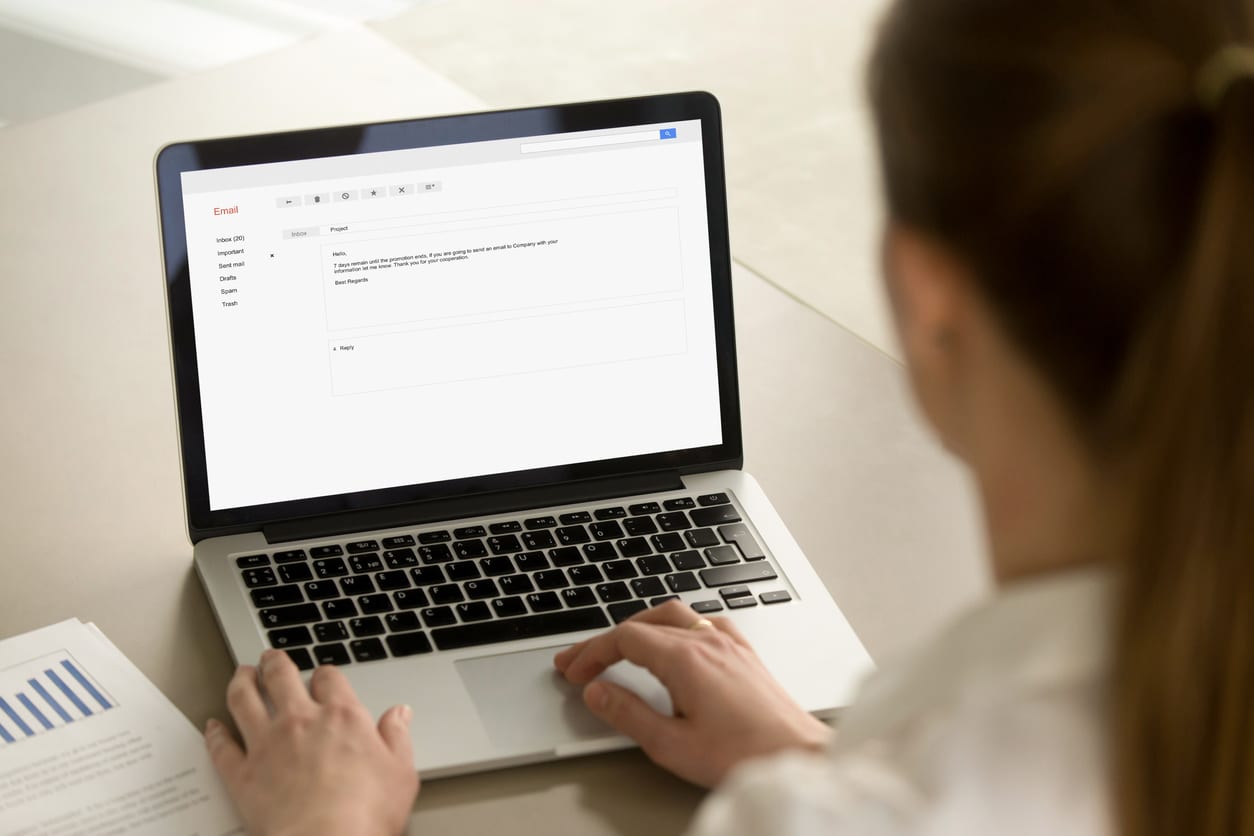10 easy steps for sending better, more efficient work emails
Take a guess at how many emails you received yesterday? 20? 30? 40? The real figure will probably be even higher. The fact is, emails are so easy to send that if they don’t grab your attention right away, they’re just as easy to forget.
Why not commit, right now, to sending better emails? All it takes is a few quick tweaks and you could see your productivity and effectiveness soar. Sound good? Then take a look at our top tips for sending emails that won’t be forgotten.
1. Subject line is king
If you work in marketing or social media management, then you’ll be well aware of the maxim that the subject line is king. Your subject line may only be a few words long, but these words are the difference between impressive or embarrassing click-through rates. Of course, if you’re emailing three people rather than 300,000, the pressure to be witty and engaging may not be quite as intense, but it’s worth taking a line out of the marketer’s handbook anyway.
Think of your subject line as your newspaper headline and write something with the aim of encouraging and enticing the receiver to know more. It’s well-documented that emails without a subject line are less likely to be opened and may even end up in a spam folder. Essentially, all arrows point to adding a few well-chosen words into the subject line box.
If you’re emailing regarding, for example, a change of meeting room, then you don’t have to beguile and entertain your audience (you can leave that to your marketing department), but you should put yourself in the position of the receiver and think what you’d want to know up front.
Consider the difference between a subject line that states “Meeting” and one that states “Urgent: Meeting change info – response required” – which of those would you open immediately and which would you assume you could leave until you were standing outside the door of the (incorrect) meeting room?

2. Announce your intentions and get to the point
Of course, it’s a good idea to be friendly and personable in an email, but a full essay on your life and a list of personal questions about theirs has no place in a work email no matter how well you know the recipient. A busy colleague will appreciate you being upfront and getting to the point right away – for example:
• “Hey Clare, great to see you last week.” = Fine
• “Hey Clare, great to see you last week. I know you’re busy, so I’ll get straight to the point…” = Fine
• “Hey Clare, how are the kids? Jamie’s been chosen for the school football team and I’m so pleased, but Louise isn’t doing so well with her piano lessons…” = Not fine
3. Check the tone
Many care about politeness, and when something is committed to print, nuance is often lost. Therefore, an email that simply states “Clare, I need this by 5pm or I’ll miss my deadline” may appear brusque to a colleague that you don’t know well, whereas “Hi Clare, can you get this to me for 5pm in time for my deadline? Thanks” is far more likely to illicit a positive response and a good working relationship going forward. Write your email and then check your tone before you press send.
4. Make your email scannable
We don’t mean scanning in the old-fashioned sense of the word; we mean, if you’re sending a lengthy email, add in a few features to make your email an easy-read. This is especially helpful when sending out long emails or emails to numerous recipients. If you want them to read the whole thing then one dry block of text is unlikely to cut it. Keep it interesting and visual by:
• Adding relevant images,
• Including subheadings,
• Using bold and italic fonts
• Don’t be afraid to include lists and bullet points

5. Limit your “To” field
There can be a tendency to include the entire office in a work email, just in case your words will be useful further down the line. But, if people regularly receive emails from you that are purely for reference then there’s a chance they’ll overlook the email you send that needs a response. Be sure that only people who need to respond to your email are in the “To” field; other relevant parties can be included in the “cc” field, which leads us into our next point…
6. Limit your “CC” field
As above, if the recipient doesn’t need the information then don’t include them. Make use of the CC field if you’re sending something that’s for someone’s information only, but be wary of inundating people with emails that aren’t relevant.
7. Be realistic about response times
If you need a response immediately, pick up the phone. If you send an email at 10 o’clock and then follow up at 10.20, your colleagues won’t thank you for it.
8. Don’t use an email to complain or vent
Humour, sarcasm and nuance can easily get lost when you commit your thoughts to print, and a seemingly harmless rant at the water cooler can seem unnervingly formal when written down. An email is not the place to vent your frustrations, even to a pal, because there’s always the chance that this will crop up again. Keep your grumbles offline. Use the New York Times rule: don’t put anything in an email today that you wouldn’t want read in the New York Times tomorrow!
9. Occasionally send an email intended to brighten someone’s day
At work, we receive emails all day long where we’re asked to carry out a task, check a fact or clarify a comment. Imagine then, the joy you’d get from an email that said, “The work you did last week was great and I just wanted to thank you again.” It would certainly encourage you to do your best work for that person in the future and would also put a smile on your face for the rest of the day. Of course, concise and relevant emails are key, but sometimes it’s nice to be nice.
10. Proof read, proof read, proof read
There are few things more embarrassing than reading over an email that you sent to the boss and realising it’s littered with typos. Of course, when you’re sending a quick, “See you outside the building at 5pm”, proofreading may not be quite so important, but for longer emails, it’s essential.
If the email is an important one, it’s a good idea to write it, leave it alone for a few minutes, and then come back and read with fresh eyes. It’s a strange phenomenon, but even the most skilled writers amongst us will overlook typos because our brains automatically read our words back in the way we intended them. If you have a colleague that you get on well with and whose opinion you trust, you could always arrange a proof-reading exchange. A little proof read goes a long way when you’re looking to be taken seriously.
Emails are undoubtedly one of the most important forms of communication in the modern workplace. By sticking to the rules outlined and giving emails their due importance, you could just improve your working relationships, shift a boss’ attitude, or kick-start that project – and all for an extra few minutes of care.
Click here for the latest news and features from SEFE Marketing & Trading or visit our homepage to find out about our latest career opportunities.
The views, opinions and positions expressed within this article are those of our third-party content providers alone and do not represent those of SEFE Marketing & Trading. The accuracy, completeness and validity of any statements made within this article are not guaranteed. SEFE Marketing & Trading accepts no liability for any errors, omissions or representations.








